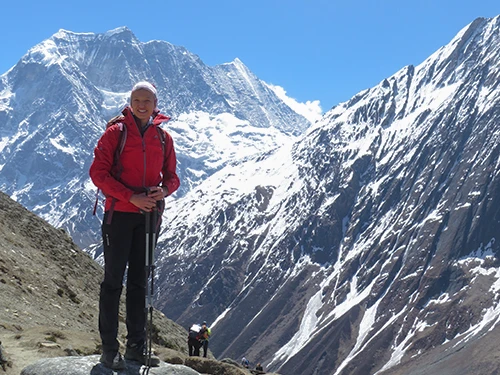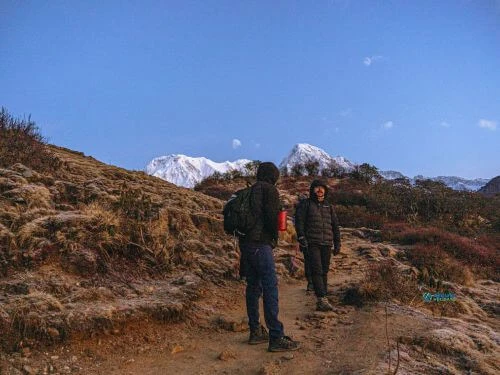If you're looking for a short, scenic trek in Nepal that doesn't push your limits but still rewards you with beautiful Himalayan views. The Ghorepani Poonhill Trek is exactly what you need. It is a nature, culture, and comfortable trip combined into a unique experience. One does not require being an experienced hiker to trek. Possess the ability to cope with some uphill hikes and you are eager to see the sun emerging behind the snow-clad Annapurna range, then you are there.
The trek begins in Pokhara, a beautiful lakeside city that serves as the gateway to the Annapurna region. During this trek, you will walk in rhododendron forests, cross centuries-old villages, and enjoy your nights in the casual and warm teahouses.
Everything will be done with Abound Holidays, who sticks by you and makes sure you are safe and learn more about the culture. Whether you're traveling solo, as a couple, or with your family, this trek offers a safe and enjoyable adventure suitable for almost everyone.
Ghorepani Poonhill Trek
The Ghorepani Poonhill Trek is one of Nepal's most prominent and enjoyable trekking packages. It offers a satisfying journey through scenic villages soaked in history, nestled in the foothills of marvelous mountains. This trek is curated by its shortness in duration and proximity to the captivating city of Pokhara, ensuring significant time savings while still delivering the complete joy of trekking. It features a circular route along one of Nepal's easy trails and is particularly suitable for families and newbie trekkers. Despite its accessibility, the trek offers mesmerizing vistas of iconic Himalayan peaks, including Dhaulagiri, Lamjung Himal, Gangapurna, Machhapuchhare, and Manaslu. The highlight of the adventure is reaching the summit of Poon Hill at dawn, where dramatic panoramas of the renowned Annapurna region unfold, fascinating trekkers with their sensational beauty.

The trail passes through rhododendron forests, terraced hills, green paddy fields, and dense vegetation, offering backpackers an exceptional experience. Along the trail, trekkers are warmly greeted by the local Gurung and Magar communities, adding to the charm of the journey. Located within the Annapurna Conservation Area, Ghorepani village sits at approximately 2,874 meters (9,429 feet), making it one of the highest settlements in central Nepal. Covering a distance of around 48 kilometers, this short trek concludes at an elevation of 3,250 meters atop Poon Hill. It is an ideal introduction to trekking in Nepal, showcasing awe-inspiring sights of the country's deep valleys and high peaks. The Poon Hill trek begins with a 1.5-hour drive from Pokhara, starting at Nayapul.
This trek to Ghorepani and Poonhil explores the precious settlements of Ulleri, Ghorepani, and Ghandruk, immersing you in the energetic mountain communities inhabited by welcoming Gurungs and Magars. With every twist and turn along the route, you'll encounter dazzling mountain vistas, each more stunning than the last as you climb higher. Poon Hill, standing at 3210 meters, offers an exceptional vantage point to witness the brilliance of the mountains and the stunning sunrise. The trek is enriched by the dense rhododendron forests alive with the tunes of birds and the scenic valleys that unfold before you.
From Dhaulagiri and Annapurna I to Annapurna South, Annapurna II, III, IV, Gangapurna, Lamjung Himal, Barasikhar, Nilgiri, Tukuche Peak, Hiunchuli, and Manaslu, you'll be treated to panoramic views of the Himalayan ranges. As the sun radiates the snow-capped peaks, including the high Dhaulagiri (8,167 m), Annapurna (8,091 m), and various other peaks, nature, and landscape fanatics will be delighted by this magical wonder. The duration of the trek can be tailored to personal preferences, ensuring a truly unforgettable experience for all.
Although acclimatization may not be a major concern, it remains vital to remain alert for symptoms of altitude sickness. Please inform your guide or companions immediately if you experience fatigue or headaches during the trek.
Poonhill, a favored viewpoint near Pokhara, sits amid the scenic highlands of Nepal's Kaski district. This trek ranks among Nepal's shorter routes, typically completed within a week. Starting from Pokhara, the journey to Poon Hill heads northward.
Departing from Pokhara, travelers follow the Baglung-Pokhara highway until reaching Nayapul, the trek's starting point. On the way from Ghorepani to Nayapul, you'll encounter multiple villages, such as Birethanti (where you'll find the ACAP check post), Hile, Tikhedhunga, Ulleri, Banthanti, and Nagethanti. From Nayapul, the trail twists through the deciduous monsoon forests of the Annapurna region.
When time is limited, this trek offers a tremendous opportunity to experience the Himalayas, whether you're a seasoned hiker or new to trekking. Along this famous route, accommodations are usually of high quality, and the food at local restaurants rarely fails to impress. The mountain views are invariably breathtaking, providing ideal photo opportunities. Join us for this beautiful short trek with us. Let's dive into the Ghorepani Poonhill trek itinerary now.
Why Choose the Ghorepani Poonhill Trek?
If you’re wondering why this version of the Ghorepani Poonhill Trek stands out? It’s all about slowing down and soaking in every moment. You will have time to breathe the air of the marvelous places and meet people. Regardless of whether you are trekking for the first time or you wish to trek at a slower pace, this path will provide an optimal ratio of adventure and comfort so that you will have memories, not miles.
Ideal for a Slow, Scenic Experience
The itinerary is meant to be taken by people who desire to have their time. You do not feel rushed. You will get a lot of rest time, a chance to talk to local people, and time to soak in the environment. It is not only the destination, but the journey as well.
More Than Just a Trek
This trek offers a perfect blend of nature and culture. You'll walk through jungles alive with birdsong, rest in centuries-old villages, and meet people who are eager to share their stories. The extra days let you explore beyond the usual tourist path.
Perfect for All Ages and Experience Levels
This avenue of trekking does not expose trekkers to the dangers of high altitude as far as Poon Hill is as high as 3,210 meters. It is even acceptable by seniors or children and is not as strenuous since the tracks are well established and safe. It is an incredible start in trekking in Nepal.
Major Highlights of Ghorepani Poonhill Trekking
- Sunrise from Poon Hill: Watching the golden light spill across Annapurna, Dhaulagiri, and Machhapuchhre is something you'll never forget. The 360-degree panoramic views are among the best in Nepal.
- Rhododendron forests: During spring time when you are trekking, the trail comes into life with different colors of the rhododendron forest due to its blossom, making the trail to be magical.
- Magar and Gurung culture: As you pass through villages like Ulleri, Ghorepani, and Ghandruk, you'll witness the unique architecture, traditions, and daily life of the Magar and Gurung communities.
- Teahouse living: These mountain lodges are more than just a place to sleep. They offer a cultural experience, a sense of community, and delicious home-cooked meals.
- Ghandruk village: Set against the backdrop of Annapurna South and Hiunchuli, this traditional Gurung village features stone-paved paths, cultural museums, and friendly locals.
- Short hike to Poon Hill: Just a 45-minute early morning walk from Ghorepani (about 1.5 km) brings you to the famous viewpoint, making it accessible for all fitness levels.
Poonhill Viewpoint
Many regard Poon Hill as one of Nepal's most prominent viewpoints and a key highlight of the Ghorepani Trek. In the early morning, hikers from Ghorepani village climb to Poon Hill to glimpse the sunrise. The panoramic views of Annapurna and Dhaulagiri are sensational, making the uphill climb through the rhododendron forest via stone stairs well worth the struggle. Poon Hill can become quite crowded, particularly during the peak trekking seasons of Spring and Autumn, as numerous fellow trekkers gather to admire the panorama. At the top, there's even a coffee place offering a selection of hot and cold drinks.
Ghandruk Village
Ghandruk village, situated in the Annapurna region, is a cultural hub settled by the Nepalese Gurung community. Well-known as one of the top overnight stops along the trekking route, Ghandruk attracts people from all corners of the country. The village offers fascinating views of the Annapurna Mountain ranges, including Machhapuchre and Himchuli, making it a favored destination for trekkers in Nepal and outside Nepal. As the second Gurung village in the country, Ghandruk is energetically promoting rural tourism by leveraging its natural resources. Visitors are enchanted by the village's pristine culture, classic way of life, mouthwatering local cuisine, warm hospitality, and stunning vistas of the glorious Himalayas.
Poon Hill Trek Cost
Planning a trek can sometimes feel overwhelming, especially when you're trying to budget for everything. The good news? The cost of the Poon Hill Trek is straightforward and offers great value for what you experience. Most of the essentials, including your meals and accommodations, permits, and even guide services are packed together. It will entail less worrying and more relaxing within the mountains. And regardless of whether you want to go on trekking alone, or form a group, we have kept it easy and clean.
Transparent Pricing
The Poon Hill trek cost typically ranges from USD 400 to 700 per person. The variation depends on your group size, level of service (standard vs. private trek), and added options like porters or upgraded lodges.
Included in the Package:
We are familiar with the experience of a trek being so much smoother when it is all organised. This is why we have packaged everything that you need; including your meal and stay at the lodges, your permits, guide; all inclusive in one item. No more guesswork, no surprises, all you need to thoroughly enjoy the ride.
Difficulty Level of Ghorepani Poonhill Trek
One of the most accessible treks in Nepal's Annapurna region is arguably the Ghorepani Poonhill trekking. Each day, the distance between settlements differs, typically demanding 4 to 6 hours of walking. Success on this trek depends on your physical and mental fitness. The trek spans four days, with the first two days involving uphill ascents through rhododendron forests. The remaining two days consist of downhill walks through forests and villages.
Best season to do the Ghorepani Poonhill Trek
The best time for Ghorepani Poon Hill Trek mainly falls during the spring (March to May) and autumn (September to November) seasons. Spring brings gentle temperatures, and the rhododendron forests lining the trail burst into a riot of colors, enriching the scenic beauty of the landscape. Autumn, recognized as Nepal's prime trekking season, offers steady weather conditions with clear skies and enjoyable daytime temperatures. It's also a festive time in Nepal, marked by cultural celebrations. The harvest season paints the landscapes with golden shades, further enhancing the trekking experience.
It is easy to figure out when, here is a brief guide:
Season | Months | Highlights | Considerations |
Spring | March to May | Rhododendrons in full bloom, warm weather, colorful trails | Popular season, moderate crowds |
Autumn | September to Nov | Crystal-clear skies, best visibility of the mountains, and comfortable temperatures | The most crowded season |
Winter | December to Feb | Peaceful trails, snow-capped landscapes | Cold nights, limited teahouse services |
Monsoon | June to August | Lush greenery, fewer tourists | Rain, leeches, slippery trails |
Each season has something new in Annapurna region. The optimum season to venture into depends on what you are after flowers in full bloom, stunning clear mountain or hiking in solitude.
- Spring (March to May): The most colorful time to trek. Rhododendrons bloom along the trail, and the temperatures are mild and pleasant. Trails can be busy, but the views are worth it.
- Autumn (September to November): Post-monsoon air offers the clearest skies and sharpest mountain views. It’s the most popular time for trekking, with perfect weather and cool nights.
- Winter (December to February): There will be snow at higher levels and, more often, cold evenings, yet, it will be less crowded. One can go trekking provided, he or she has adequate equipment and warm clothing.
- Monsoon (June to August): Not recommended for most travelers. Trails are muddy, views are often blocked by clouds, and there’s a higher chance of leeches. However, it’s peaceful and green.
When to go for the Ghorepani trek?
The classic peak months for trekking, with clear weather and mild to average temperatures, are from October to November. While there are no high crossings along the Poon Hill trek, it remains a highly popular route, which may pose challenges for some due to encountering numerous tourists during the high season. Additionally, early December is gaining popularity among trekkers as it offers fewer crowds and still maintains appropriate temperatures. However, as December progresses, the weather cools down, leading to freezing temperatures in January and February.

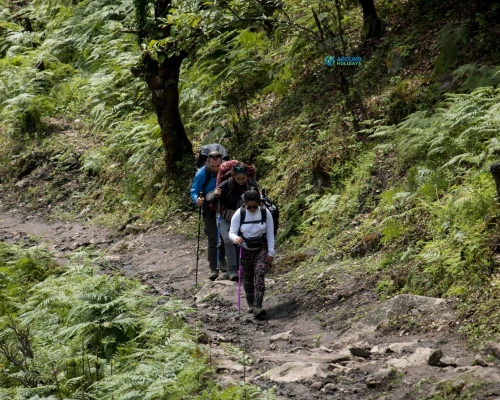
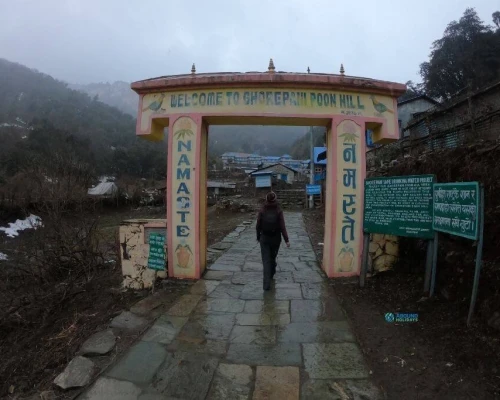
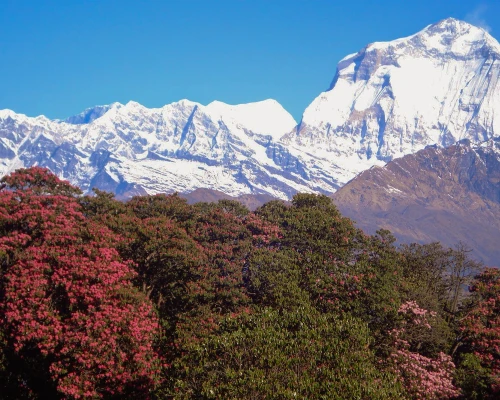
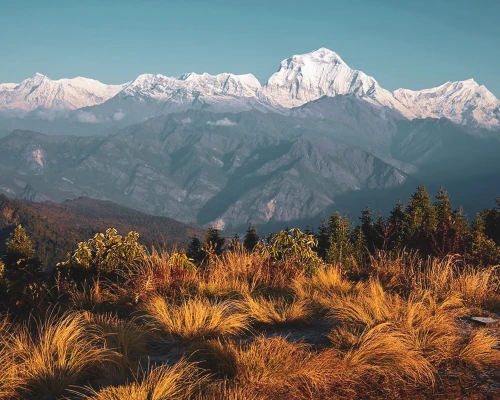
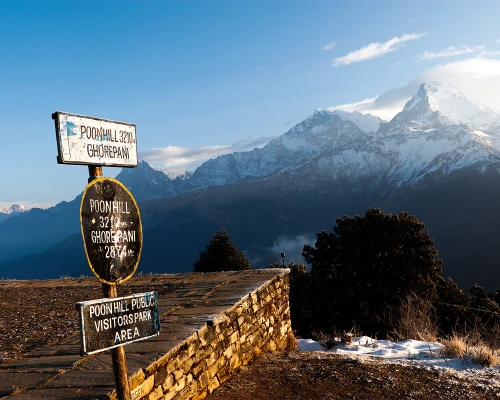
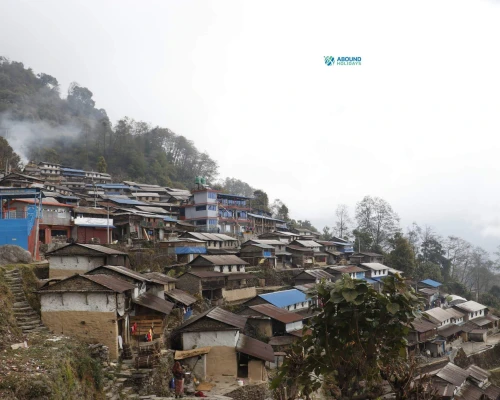
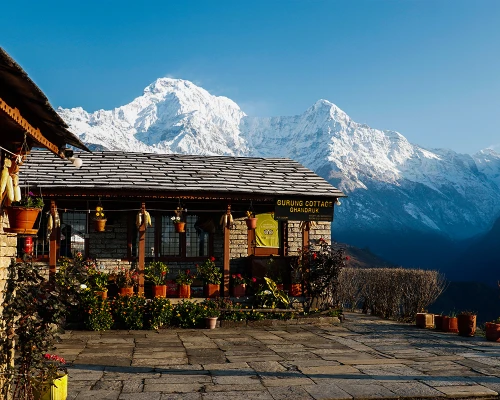
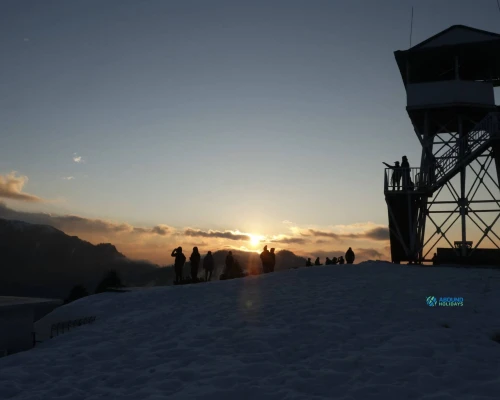
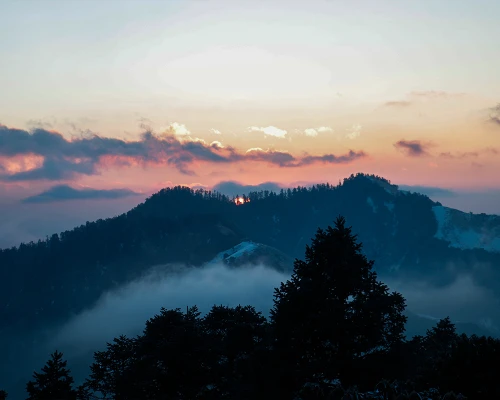
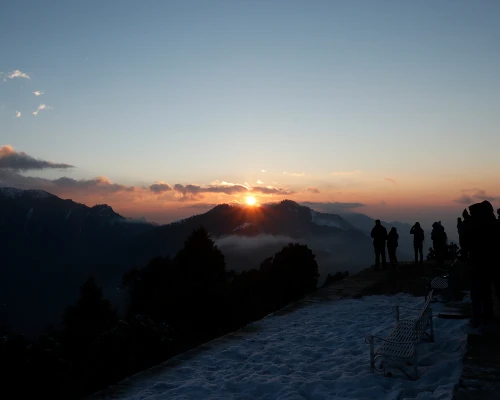
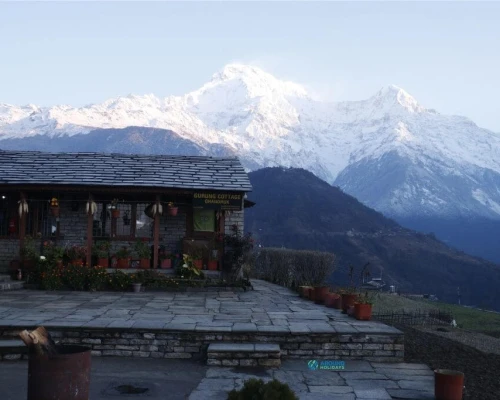
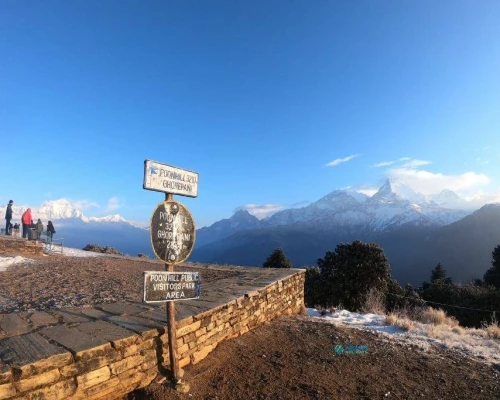
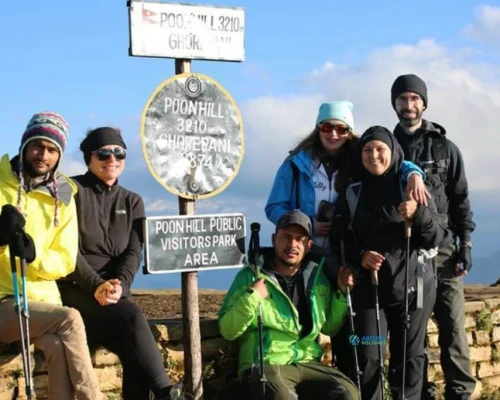
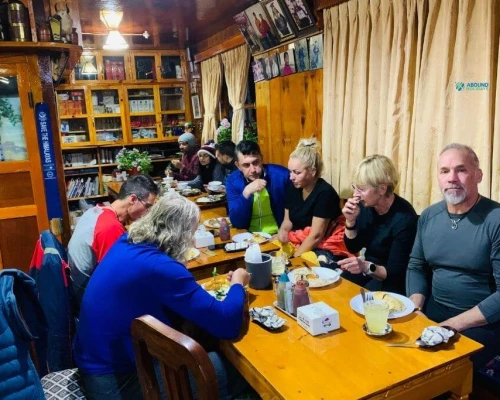
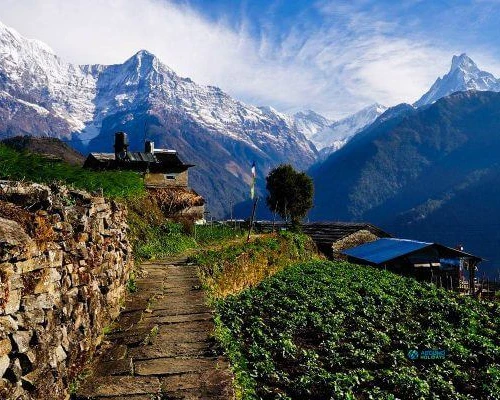
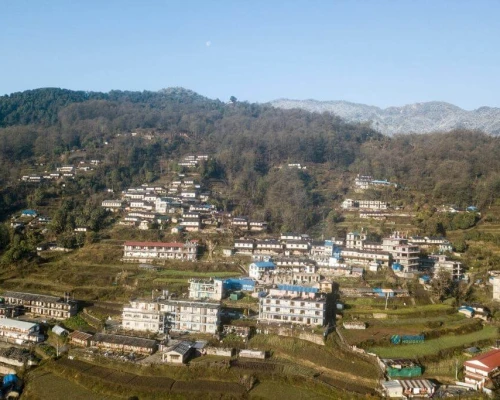
.webp)
.webp)
.webp)

 based on 5 reviews
based on 5 reviews